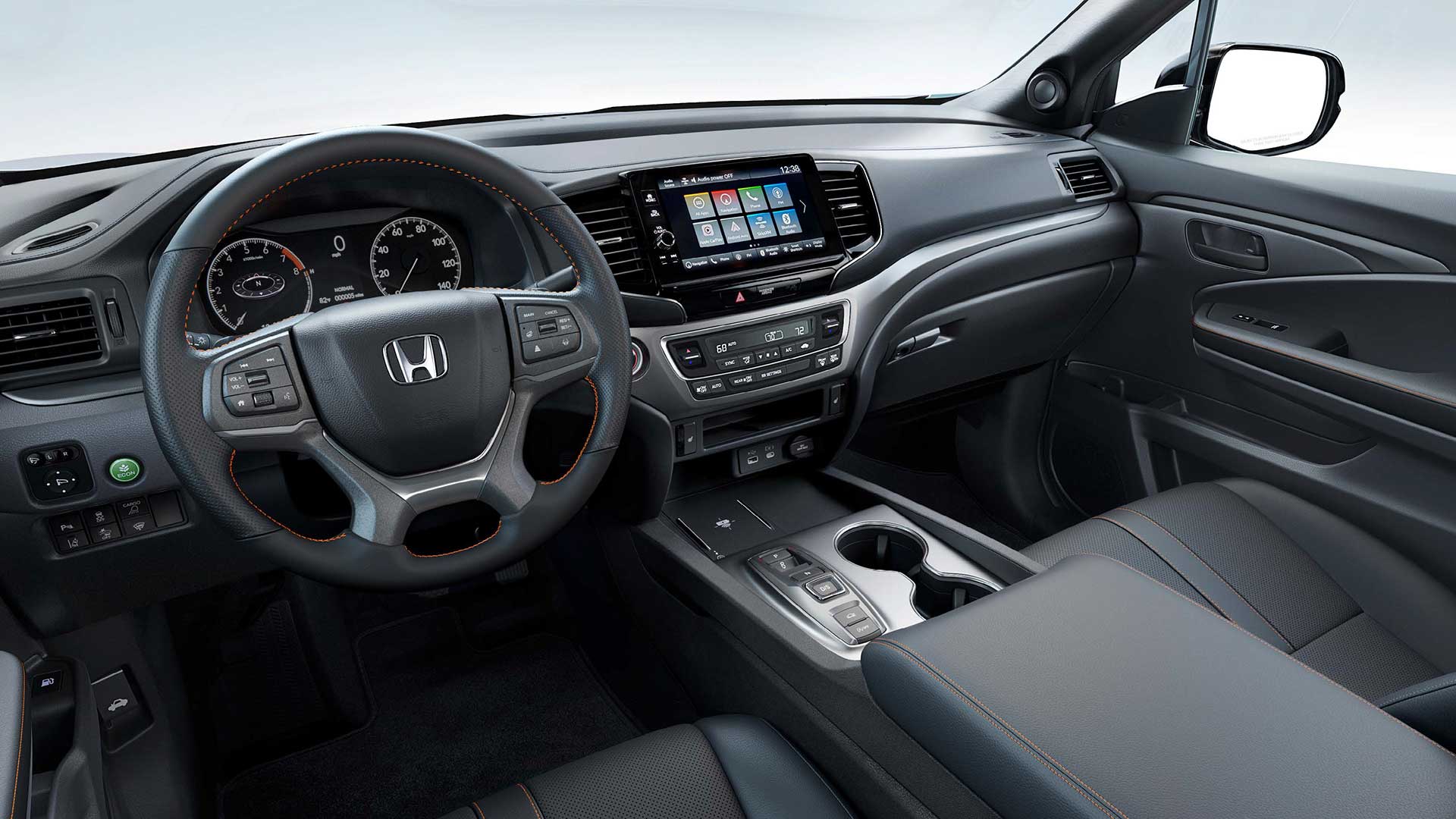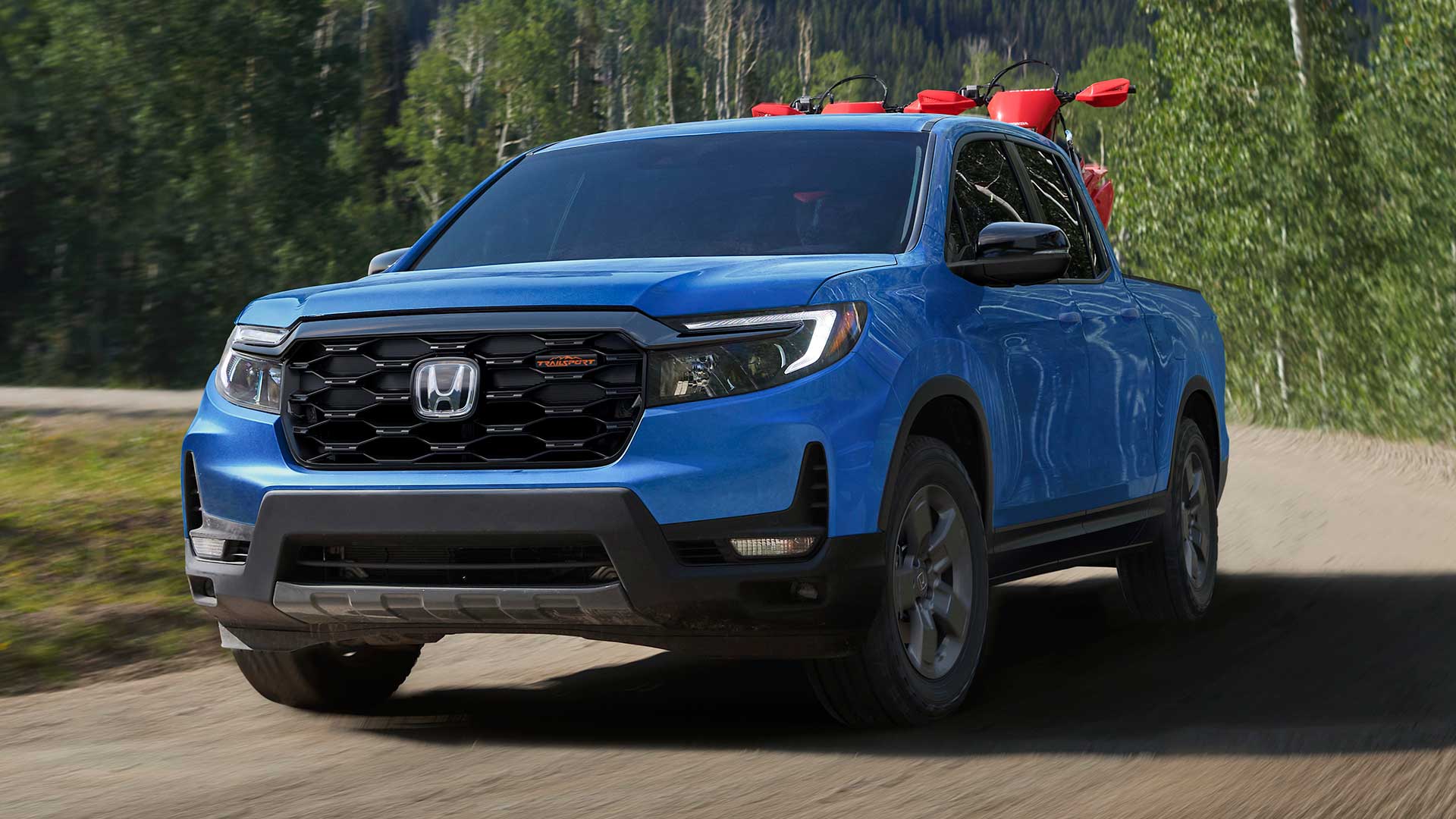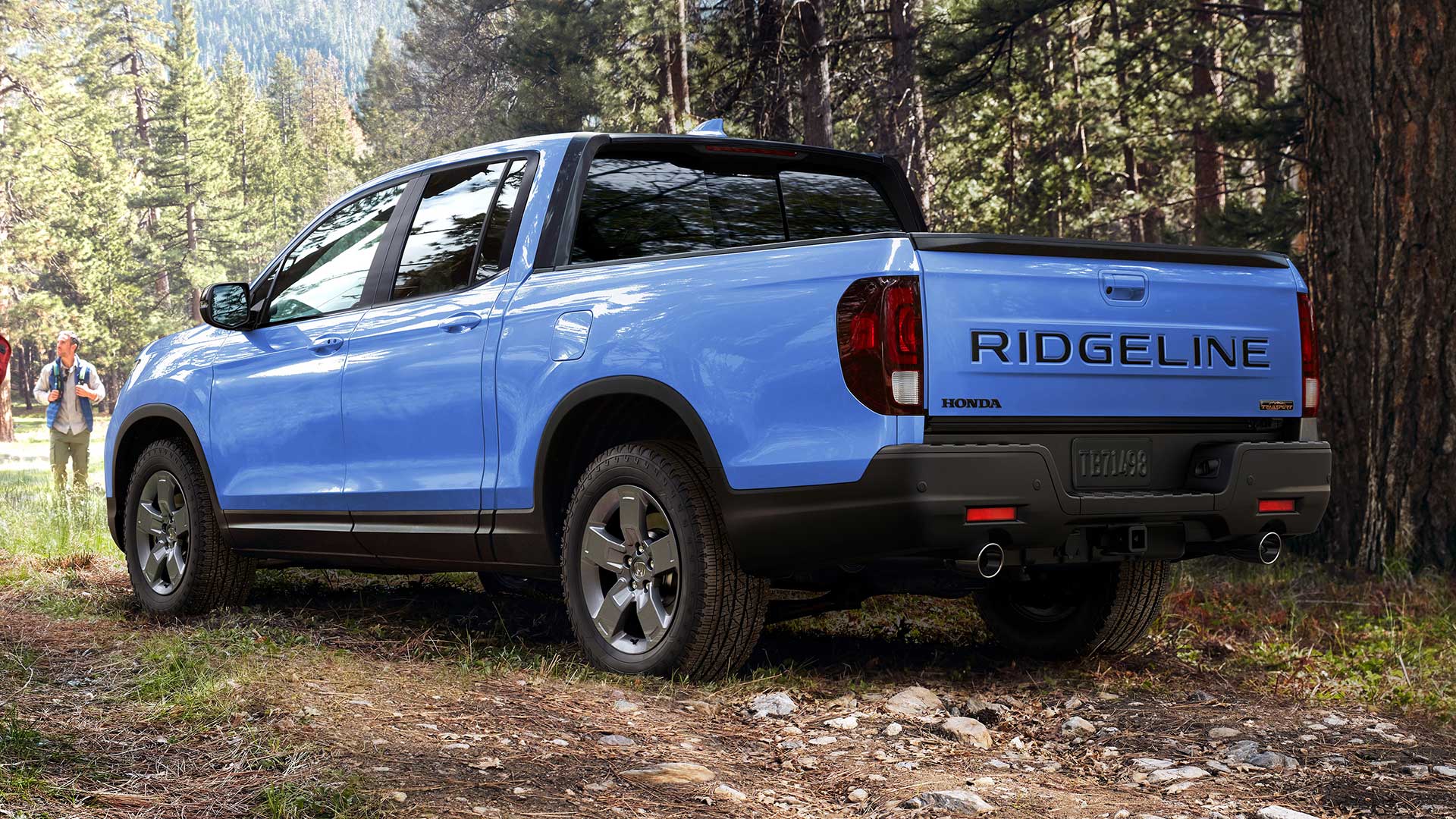2023 Lamborghini Huracán Tecnica
TECNICAly The Best Huracan Yet
While we’d all like to see a Lamborghini Huracán STO sitting in our garage, it’s one car that truly does belong on a racetrack. Now, if there was only a way to get the STO’s performance in a street-friendly ride that’s as easy to drive as it is easy on the eyes. Well, Lamborghini has granted our wishes with the Huracán Tecnica!
Unless you spend a lot of time following all the goings-on in the exotic performance car world, you might find it hard to keep up with Lamborghini. Since they established a whole new level of supercar accessibility with the entry-level Huracán for 2015, they’ve been constantly evolving it, even adding Evo to the name of its current base model to drive the point home.
Their latest wind of change is this 2023 Lamborghini Huracán Tecnica which takes most of what makes the top STO great, including its engine, and puts it in a something a little more street-able; essentially creating an additional tweener model between mild and wild. Regardless, it’s a Lamborghini, so we couldn’t wait to get on the track at Savannah, Georgia’s Roebling Road Raceway.
With all of its performance potential, it’s clear right away that the friendly Huracán nature remains fully intact. Your senses tell you to take it easy the first few laps, but you soon find yourself pushing harder and harder.
Much of the STO’s outlandish aero treatments are gone, that means a smaller wing and fewer air intakes. But the car’s shape itself still creates an amazing amount of downforce, providing grip aplenty for the tires; which are 245/30 Bridgestone Potenza Sports in front, 305/30 in rear; all mounted on diamond-cut 20-inch wheels. The front splitter is unique, as is the rear fascia, along with a subtle reshaping of the panel at the base of the windshield.
Lamborghini’s LDVI integrated driving dynamics control works through Strada, Sport, and Corsa drive modes, staying mostly behind the scenes enhancing your abilities, not holding back the car’s. For track use, Corsa puts you mostly in total control, though there always seems to be a safety net in place.
The Tecnica is rear-wheel drive only, so the front end feels lighter than AWD variants, and more willing to turn in; aided by good steering feel for precise inputs, as well as standard rear-wheel steer. Carbon-ceramic brakes are included, giving great feel and consistent results throughout our track days. It absolutely wails going around the track thanks to the free-flowing exhaust of that glorious mid-ship mounted V10 engine.
This 5.2-liter naturally aspirated V10 was an outlier when it first arrived; no turbos, superchargers, or battery assist. It’s even more so now, and we love hearing every one of its 631-horsepower and 417 lb-ft. of torque being made. It still works through the same 7-speed dual-clutch automatic transmission.
Put to the straight-line test, despite being rear-drive only, there was no lack of grip off the line. Just immense power flowing non-stop. We hit 60 in only 2.9-seconds and finished the ¼ in 10.7-seconds at 134 miles-per-hour.
Lamborghini has already said that they’ll be winding down Huracán production soon; so, were not sure whether to be sad about that, or excited for what’s next. At its base level, the Tecnica is more luxurious and less purposeful than the STO, but with the full cannon of Lamborghini customizations available, buyers can basically add in as many of the STO’s goodies as they want, including lots of carbon fiber.
Driven on the street, it’s not quite like a Camry, but it is comfortable and surprisingly easy to drive; though thankfully you can still hear plenty of mechanical noises, and you’re obviously well conscious of your investment.
While performance-wise the Tecnica is situated in between the base Huracán Evo and top STO, Lamborghini no longer offers a rear-wheel drive base Huracán, so the Tecnica actually starts a few thousand less, at $244,795. Meaning, unless you absolutely need all-wheel drive, you can get the best of both Huracán worlds, and still pay a tad less for it.
So, while most people in our world today tend to look at compromise as a dirty word, it’s the very thing that made the Huracán a true game changer when it arrived, and what has continued to make it a longtime success story. The 2023 Lamborghini Huracán Tecnica takes that theme to the extreme; though engineered for the street, it feels equally at home on the track, making it “TECNICAly”, the best Huracán yet.
Specifications
- Engine: 5.2L V10
- Horsepower: 631
- Torque: 417 lb-ft
- 0-60 mph: 2.9 seconds
- 1/4 Mile: 10.7 seconds at 134 mph
2024 Honda Ridgeline TrailSport
It Does Truck-Like Things Better Than Ever
Honda brought something truly unique to the pickup truck scene when their mid-size Ridgeline debuted for 2006. In 2017, it moved towards becoming a little more true truck-like, both in form and capability, now with yet another step in that direction for 2024. So, let’s see if the Ridgeline is really hitting its stride.
For 2024, it’s all about making this Honda Ridgeline better than ever. There are styling tweaks outside, along with tech and functional improvements inside, but the biggest news is the Ridgeline has now joined Honda’s TrailSport family of off-road inspired vehicles. This more-true-trucklike, second-gen Ridgeline been around since 2017, receiving periodic updates over the years; but joining the TrailSport family is the biggest leap yet.
Primarily, the TrailSport transformation includes General Grabber all-terrain tires, mounted on new Pewter Gray 18-inch wheels, steel underbody protection, and retuning the strut front, and multi-link rear suspension for added wheel articulation. And while we always appreciate the additional traction of off-road tires, the Ridgeline’s standard i-VTM4 all-wheel drive, with Intelligent Traction Management and snow, sand, and mud settings, was already quite capable of handling all but the most extreme off-roading, ground clearance of just 7.6 inches being it’s only real hinderance.
A 3.5-liter V6 remains under the hood as it has since the Ridgeline debuted for 2006; the current version outputs 280 horsepower and 262 lb-ft of torque, plenty enough muscle to handle its 5,000-lbs. towing capacity. A nine-speed automatic transmission with paddle shifters and bevy of push and pull buttons on the console replaced the six-speed automatic back in 2020.
In addition to adding TrailSport capability, a big focus for this update was making it more user-friendly inside, starting with the central touchscreen growing from 8 to 9 inches. It also gets faster processing speeds, menus have been simplified, and the native navigation system is improved with better graphics. It’s accompanied by a new digital instrument cluster, along with an upgraded center console with more storage space. Unique TrailSport touches include heavy duty floormats, leather-trimmed seats, orange stitching throughout the cabin, and orange ambient lighting.
The Ridgeline continues to offer things available nowhere else in the pickup truck market.
Exterior styling doesn’t exactly shout “macho big rig coming your way,” but the more vertical face and larger grille that arrived for 2021, along with this year’s added TrailSport elements, do continue to toughen up the Ridgeline’s image. The 5’4” bed remains highly functional with no large wheel well intrusions, multiple tie-downs points, lighting and even speakers. And of course, the Ridgeline continues to offer things available nowhere else in the pickup truck market, like the dual-action tailgate, and large, lockable, drainable, underbed storage. Not to mention being able to drive around in true car-like comfort, something we took full advantage of on our way to our Mason Dixon Dragway test track.
There was great grip off the line, with full power arriving smoothly but quickly, helping us to get to 60 in 7.0 seconds flat, a tenth quicker than the last Ridgeline we tested. That power delivery stayed fairly consistent the whole way down the track, barely interrupted by the nine-speed automatic’s smooth shifting. Our best quarter-mile run was 15.5 seconds at 90 mph.

The revised suspension and knobbier tires didn’t really seem to add or detract from handling prowess, as it felt as solid, nimble, and car-like as it always has through our cone course. Perhaps a little less stiff than before, but good feedback, tight steering, and minimal body roll for a pickup, made for a very confidence inspiring experience. In our braking test, we stopped in a respectable average of 123 feet from 60, with only moderate amounts of nosedive and good feel through the pedal.
There is, however, a slight reduction in Government Fuel Economy Ratings with the all-terrain tires; 18-City, 23-Highway, and 20-Combined, our average, right on, at 20.4 mpg of Regular. That’s a slightly below average Energy Impact Score of 14.9 barrels of yearly oil use, with CO2 emissions of 7.4 tons.
TrailSport pricing falls in line just under the Ridgeline’s top Black Edition trim with a starting price of $46,375, about five grand over a base Ridgeline Sport.
So, whether you consider the Honda Ridgeline to be a “real” truck or not, this ruggedly smooth 2024 TrailSport does truck-like things better than ever. And we’re not just talking about the slight upgrade in off-road performance, we’re talking about a flexible bed to help you get chores done, and the ability to tow or haul with comfort and flexibility other trucks can only wish for. It’s why the Ridgeline brings more first-time buyers to Honda than any other vehicle, and why it continues to be a great choice in the growing midsize truck realm.
Specifications
- Engine: 3.5-liter V6
- Transmission: 9-speed automatic
- Horsepower: 280
- Torque: 262 lb-ft
- EPA: 18 City | 23 Highway | 20 Combined
- 0-60 mph: 7.0 seconds
- 1/4 Mile: 15.5 seconds at 90 mph
- 60-0 Braking (avg): 123 feet
- MW Fuel Economy: 20.4 mpg (Regular)
- Max Towing Capacity: 5,000-lbs








